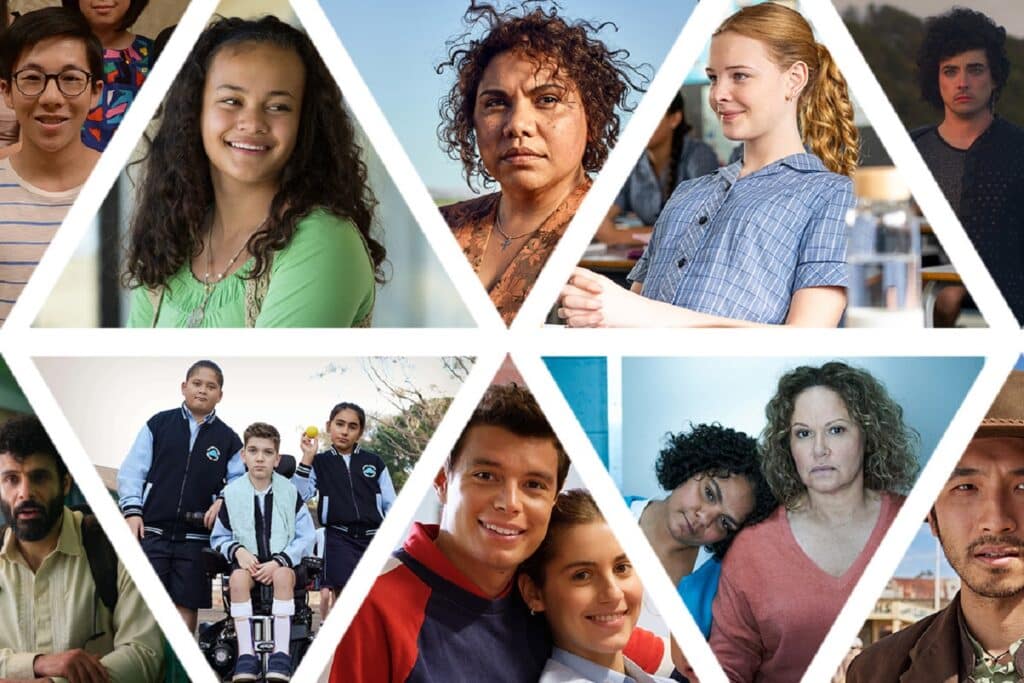Diversity in Australian TV Drama has seen some welcome progress, according to new research from Screen Australia, but still has yet to fully represent the many communities that make up modern Australia.
Seeing an increase in representation since 2016 were First Nations people (7.2 per cent from 4.8 per cent), disabled people (6.6 per cent from 3.6 per cent), LGBTQ+ people (7.4 per cent from 4.5 per cent) and non-European people (16 per cent from 6.9 per cent).
While these statistics show progress in diversity, the report also notes that a number of Australia’s communities remain under-represented on-screen when compared to population benchmarks. This is particularly true for disability representation which has remained critically low.
This report, titled Seeing Ourselves 2: Diversity, Equity and Inclusion in Australian TV Drama, is a follow-up to a landmark 2016 study. Comparing previous data, Seeing Ourselves 2 examines the diversity of main characters in 361 scripted Australian TV and online dramas broadcast between 2016 and 2021.
“It’s vital that Australian screen stories authentically reflect the diversity of our nation, and we know that the screen industry is becoming more aware of the cultural and commercial value of creating diverse content,” said Screen Australia’s CEO Graeme Mason.
“It’s great to see improvements since 2016, however these results show that the overall pace of progress is slow and there is a long way to go to reach genuine representation of Australia’s diverse communities on screen.”
On a positive note, the report shows the gender of main characters was evenly split between men and women, similar to the Australian population.
First Nations representation was also a highlight as the number of First Nations main characters increased from 4.8 per cent to 7.2 per cent. This is higher than the population benchmark, which is at 3.8 per cent.
Screen Australia’s Head of First Nations, Angela Bates said, “For Aboriginal and Torres Strait Islander people to be able to see ourselves represented on screen in shows such as Mystery Road, Total Control and Black Comedy, is powerful.”
“This result shows good progress and it’s not by accident – it represents years of advocacy and consistent hard work to ensure our practitioners feel supported and are afforded opportunities in an industry that hasn’t always been accessible.”
And while the number of LGBTQ+ characters increased (7.4 per cent from 4.5 per cent), it’s still lower than the estimated 11 per cent of the population who identify as LGBTQ+.
Another community that stands out as having a significant under-representation on-screen is people with a disability. While disability representation went up from 3.6 per cent to 6.6 per cent, it’s still much lower than the percentage of the Australian population with disability (18 per cent).
Minister for the Arts, Tony Burke said, “Australian drama on screen is compelling and powerful. It’s a cornerstone of how Australians see themselves, learn about each other and how the world comes to know us. It shouldn’t be too much to ask that when you watch Australian screen, it looks like modern Australia.”
Speaking to how Screen Australia hopes this latest research will impact Australian diversity on-screen, Mason said they hope that shining a light on the issue “will inform, educate and influence decision-making across the whole sector”.


